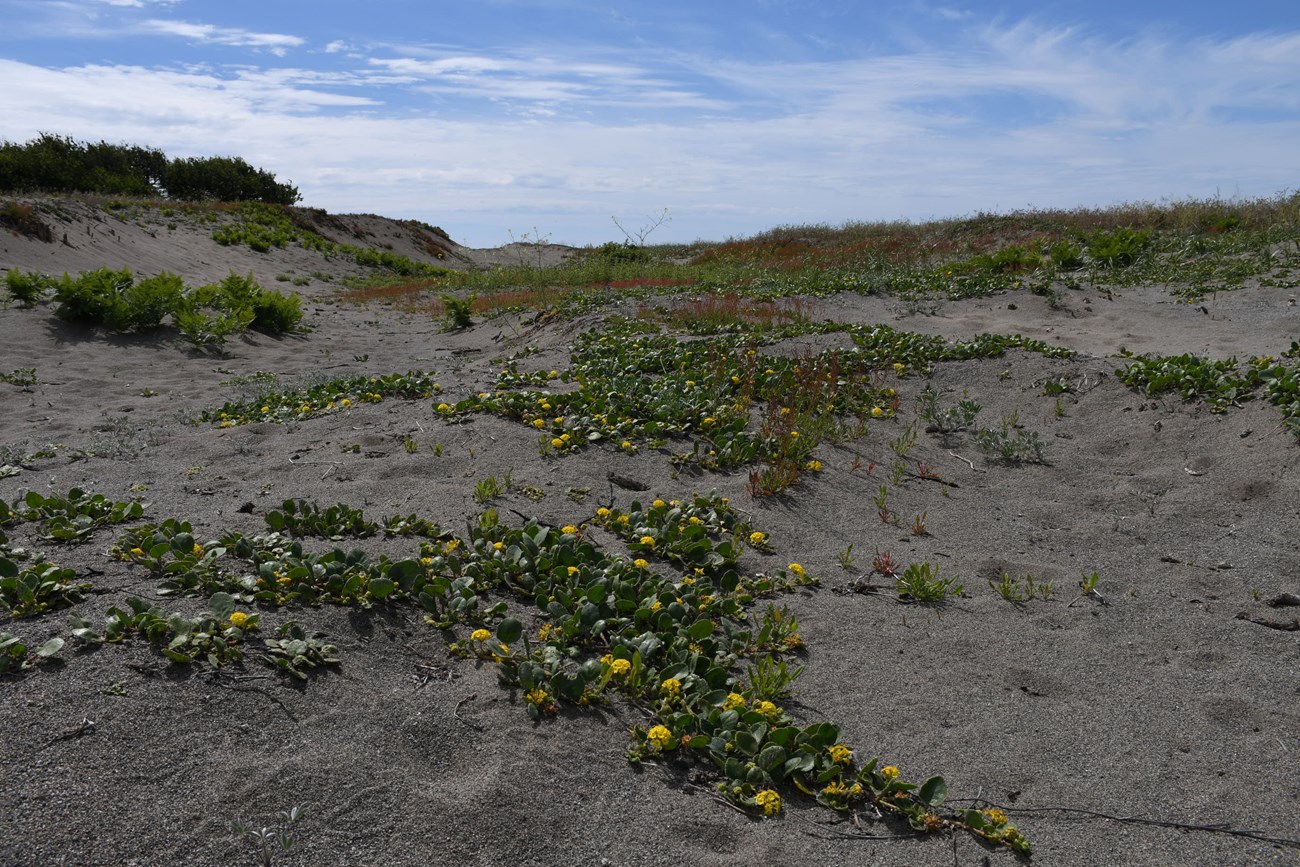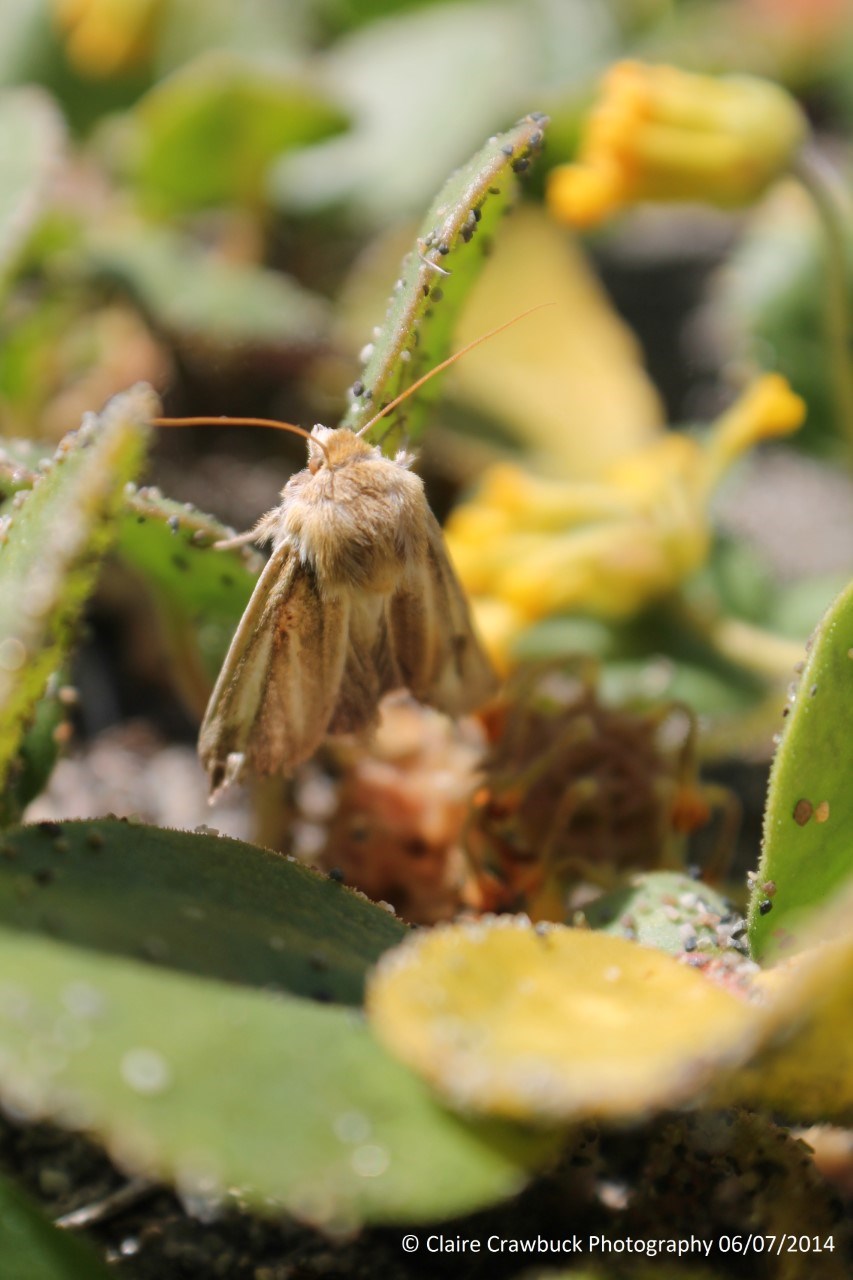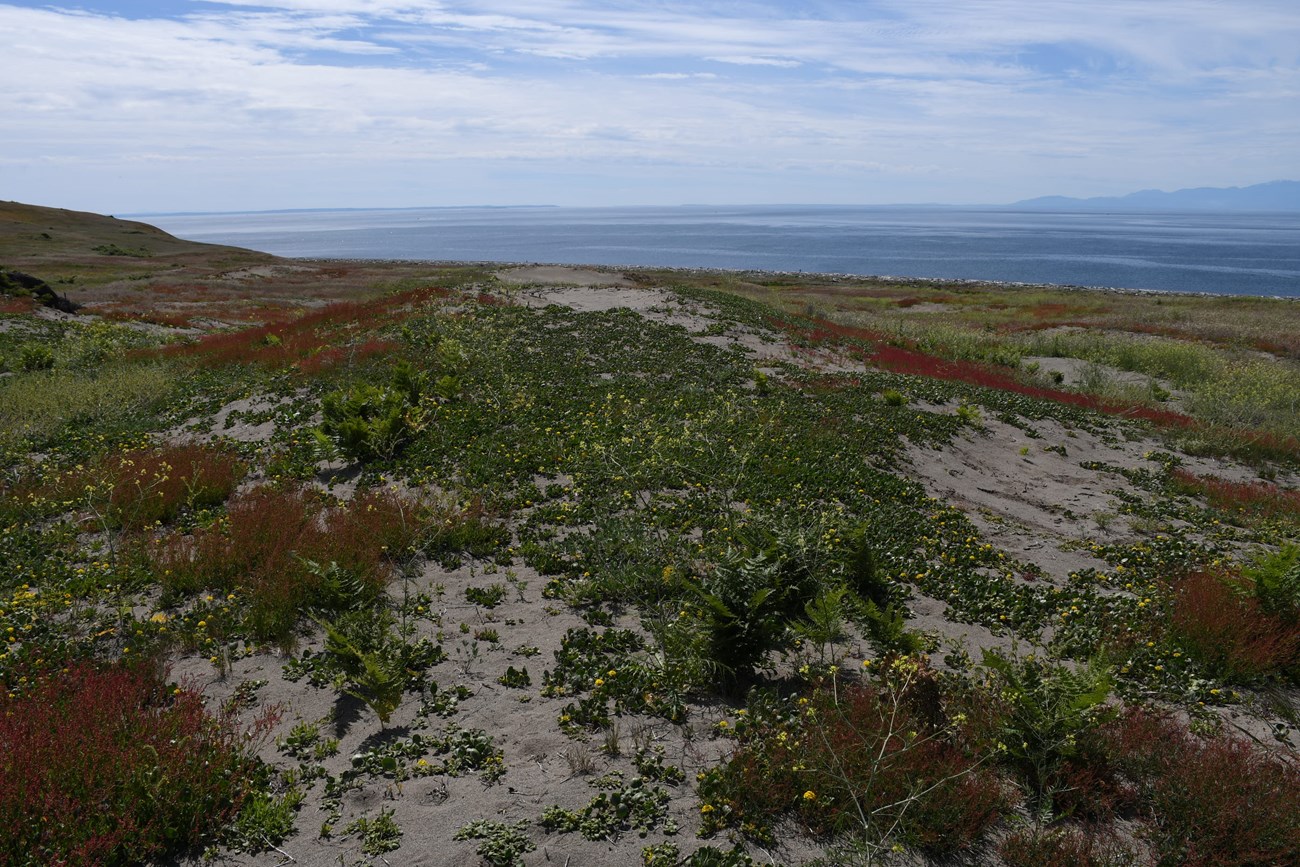
NPS Once common in the Salish Sea region, the sand dunes at American Camp are one of few coastal dune ecosystems remaining. Since sand dunes have become imperiled, so have the plants and animals that call the dunes home. San Juan Island has the largest remaining population of yellow sand verbena, much of which can be found at American Camp sand dunes. This plant is found in only three sites in the United States (Washington state only) and five sites in Canada. It is imperative to the survival of the sand verbena moth. Canada has listed the moth as endangered but in contrast, it has no legal protection under the Federal or State Endangered Species programs. The American Camp sand dunes are also home to the endangered island marble butterfly and contain dense patches of tumble mustard, one of three host plants to the butterfly. American Camp and its surrounding environs are the only place left in the world that contain this rare species. For the survival of this ecosystem, sand must be free flowing. Invasive plants that stabilize the sand (Canada thistle and Himalayan blackberry) prohibit this from happening and invite other non-native plants to take root. The NPS is concerned with the effects of dune stabilization and the potential conversion of the dunes to shrublands or grasslands. We continue to control invasive plants while making sure no harm comes to fragile plants and animals. To help protect the dunes, please do not walk within fenced areas. Walking in the dunes can trample island marble butterfly host plants. 

NPS |
Last updated: August 12, 2022
